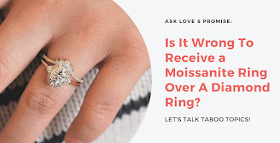What is Moissanite Diamond and How Does it Compare to Natural Diamonds?
"What is Moissanite Diamond and How Does it Compare to Natural Diamonds?" - This article could provide an overview of what moissanite diamonds are, how they are made, and how they compare to traditional diamonds in terms of appearance, durability, and cost. "Why Choose Moissanite Over a Natural Diamond?" - This article could explore some of the reasons why someone might choose to buy a moissanite diamond instead of a natural diamond. Some potential reasons might include cost, environmental concerns, or a desire for a unique and ethical option. "How to Care for Your Moissanite Diamond Jewelry" - This article could provide tips and advice for how to care for moissanite diamond jewelry to ensure that it stays in good condition over time. This might include information on cleaning, storage, and other best practices. "Moissanite Engagement Rings: A Budget-Friendly Alternative to Diamonds" - This article could focus specifically on moissanite engagem...
.jpg)

